Have a Gas Emergency?
Call 1-800-444-3130
24 Hours a Day
811 Call Before You Dig
Call 8-1-1 before you dig to have your utility lines marked for free.
NYSE: NFG
(Minimum 20 min. delay)
$72.68
$-0.07
Volume 764,005
02/21/2025
4:00 PM
National Fuel Gas Company and five of our subsidiaries that span all key sectors of the natural gas value chain participate in the U.S. Environmental Protection Agency’s (EPA) Methane Challenge Program. This voluntary program within the energy industry is designed to provide a transparent platform for utilities, pipeline and storage companies, and energy producers to make, track and communicate commitments to reduce methane emissions. Additionally, National Fuel recently joined the ONE Future Coalition. This coalition is a group of natural gas companies working together to voluntarily reduce methane emissions intensity across the natural gas value chain to 1% (or less) by 2025 and is comprised of some of the largest natural gas production, gathering & boosting, processing, transmission & storage companies in the U.S. and represents more than 15% of the natural gas value chain. The below image represents the National Fuel Emissions Reduction Targets.
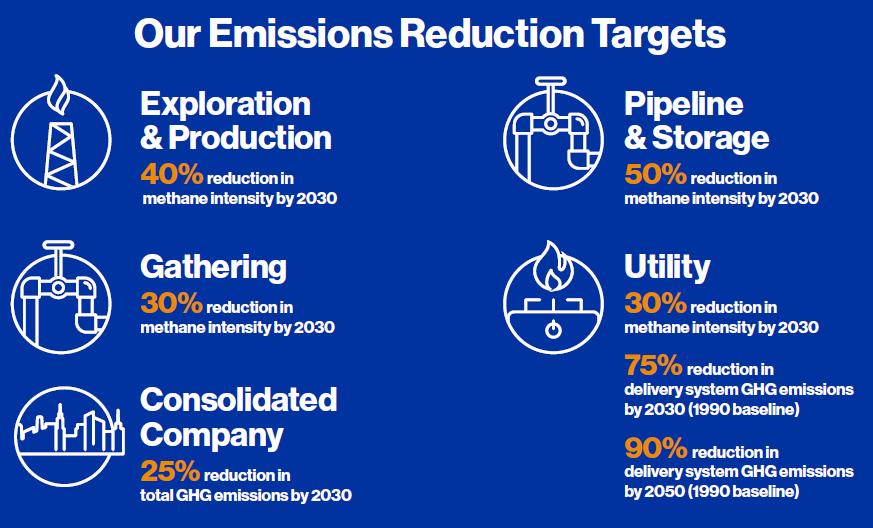
National Fuel remains focused on reducing our carbon footprint. Through our Marcellus and Utica Shale development and expansion of pipeline infrastructure in Appalachia, National Fuel has played a key role in increasing the availability and accessibility of reliable natural gas in the northeastern United States and eastern Canada. The increase in the use of natural gas for power generation and in manufacturing has been the primary driver of the country’s overall reduction in GHG emissions and improved energy reliability for the U.S. economy.
While natural gas has lower GHG emissions than other fossil fuels, the natural gas value chain can and does result in GHG emissions, including methane. National Fuel recognizes that we play an important role in reducing GHG emissions. That is why we continue to direct our efforts toward implementing best practices and technologies, investing in the modernization of our pipeline infrastructure and ensuring compliance with stringent federal and state regulations as the best ways to have a meaningful impact on reducing GHG emissions.
Exploration and Production
The company’s exploration and production subsidiary, Seneca Resources, is focused on minimizing GHG emissions and other air criteria pollutants to be responsive to our stakeholders’ environmental concerns and reduce the risk for lost revenues.
Seneca Resources regularly reviews emissions management and monitoring protocols. Seneca Resources has implemented a number of initiatives, technologies and processes to ensure compliance with federal and state reporting regulations and continuously seeks out new ways to minimize GHG and other air emissions generated by operations. Such activities include:
Monitoring and Reporting Compliance
The Environmental Partnership
Seneca Resources participates in The Environmental Partnership, a group organized by the American Petroleum Institute committed to improving the natural gas and oil industry’s environmental performance. The Environmental Partnership has developed three separate environmental performance programs for participating companies to implement and phase into their operations that began Jan. 1, 2018. These programs were selected based on EPA emissions data and are designed to reduce emissions of methane and volatile organic compounds (VOCs), using proven best practices and cost-effective technologies. Areas of focus include:
- Leak detection and repair (LDAR)
- Manual liquids unloading practices
- Use of lower or zero-bleed pneumatic controllers
Learn more about The Environmental Partnership.
EPA Methane Challenge Program
Demonstrating commitment to responsible oil and gas development, Seneca Resources has voluntarily participated in the EPA’s Natural Gas STAR Methane Challenge Program since 2018. The Methane Challenge Program is voluntary and is focused on the reduction of methane emissions through the use of technology and/or process improvements. The program is structured to allow participation in different operational segments ranging from production through distribution. Seneca Resources has chosen to participate in the following operations segments: Onshore Production, Gathering and Boosting, and Natural Gas Processing. For each operational segment, the EPA has identified a number of emission sources for which a company may choose to commit to reduce emissions through several mitigation options. Participants of the program will report annually to the EPA.
Green Completions
Seneca Resources employs “green completion” techniques on nearly all Marcellus and Utica Shale development wells. Seneca Resources avoids venting or flaring during a well’s initial production whenever possible to minimize methane emissions. All of Seneca Resources’ development wells in fiscal 2019 employed green completions.
Ultrasonic Leak Detection Technology
Seneca Resources pioneered the industry’s onshore use of ultrasonic leak detection technology on the Marcellus well pads. Now, with more than 110 units in place, Seneca Resources is able to remotely detect the presence of any leaks on well pads and immediately shut down production for repair, if necessary.
Emissions Controls
Control measures are in place for combustion and non-combustion equipment to abate and/or mitigate methane and VOC emissions. Seneca Resources uses infrared cameras to perform optical gas imaging for leak detection surveys on all of their unconventional well pads and permitted compressor facilities in Pennsylvania, including the 189 wells that are exempt from these inspections.
Rig, Frac, Field Engines and Vehicle Fuel Conversion
In October 2011, Seneca Resources began utilizing EPA-certified natural gas engines to provide all electrical power needed to support drilling rig operations, the first natural gas (LNG)-fueled drilling rigs in Pennsylvania’s Marcellus Shale region. As of the spring of 2020, all of Seneca Resources’ two drilling rigs are dual fuel, allowing the replacement of diesel with abundant, affordable and reliable natural gas. In 2019, Seneca Resources also began using a dual-fuel frac, furthering our replacement of diesel with abundant, affordable and reliable natural gas. Seneca Resources continues to look for opportunities to convert diesel engines utilized in field operations to dual-fuel or natural gas engines; temporary natural gas fluid transfer pumps are just one example of this effort. In addition, some of Seneca Resources’ fleet vehicles in the East Division are also dual-fuel engines, extending the capability to run both natural gas and gasoline.
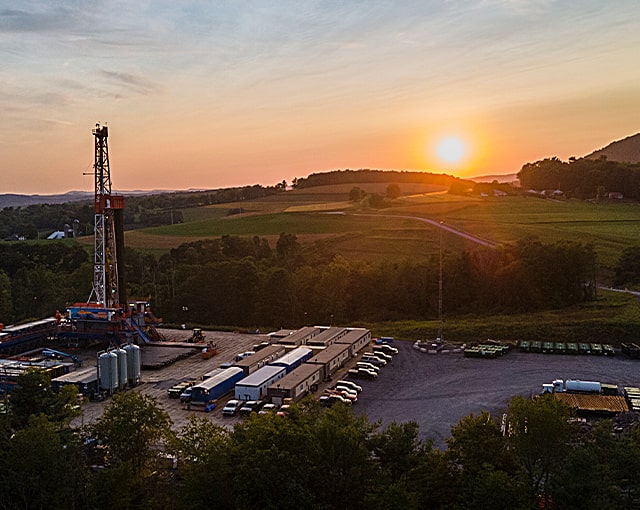

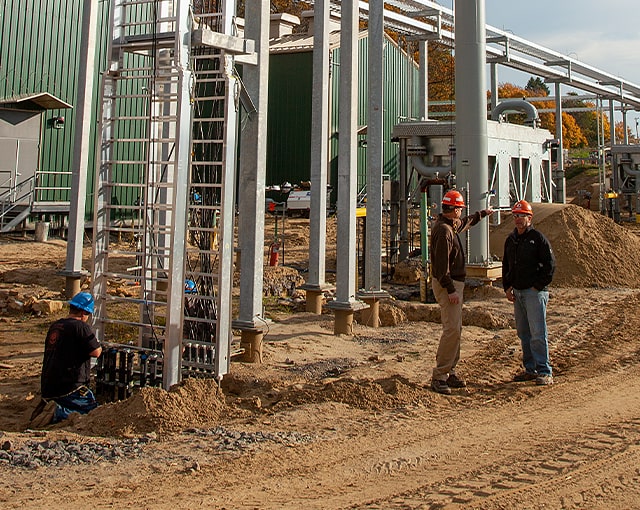
Utility
For decades, our utility segment has been at the forefront of efforts to improve safety while reducing direct methane emissions from our pipelines through system modernization, as well as initiatives to lower our customers’ carbon footprint through energy efficiency and conservation. Significant initiatives and achievements include:
EPA Methane Challenge Program
We’re a proud partner in the EPA Methane Challenge Program. Through this program, we have made voluntary commitments to reduce methane emissions by replacing aging mains and services as well as monitoring damage causing the uncontrolled release of natural gas. As a Methane Challenge partner, National Fuel will also provide data beyond that required by current regulations.
Learn more about National Fuel Gas Distribution Corporation’s Methane Challenge commitments.
Monitoring and reporting compliance
National Fuel Gas Distribution Corporation reports direct and indirect GHG emissions, including methane, under the EPA’s GHGRP for both our New York and Pennsylvania service territories. See National Fuel Gas Distribution Corporation’s EPA reported emissions data.
In addition to mandatory reporting, National Fuel voluntarily discloses various emissions metrics developed by the American Gas Association (AGA) and the Edison Electric Institute (EEI). The AGA-EEI partnership, led by a CEO taskforce, has established the Natural Gas Sustainability Initiative (NGSI), which developed additional metrics beyond those required by mandatory reporting. National Fuel has been an active participant in this process.
Pipeline replacement and modernization
National Fuel directs capital spending to pipeline repair, replacement and maintenance that support our statutory obligation to provide safe and reliable service to our more than 747,000 utility customers. While safety will always be our number one motivation, National Fuel’s continued investments in the modernization of our utility system have had the additional benefit of helping to reduce our GHG emissions. Our replacement of aging natural gas infrastructure with modern materials and technologies has resulted in fewer leaks across the system and significantly lower methane emissions. Since 2012, we have seen a 30.5% reduction in direct greenhouse gas emissions, primarily methane, as reported to the U.S. EPA under Subpart W of 40 CFR Part 98. We expect this trend to continue as we accelerate our investments in system modernization.
Although New York’s ambitious Climate Leadership and Community Protection Act (CLCPA) creates additional challenges, National Fuel’s aggressive modernization program has positioned us to meet, and likely exceed, CLCPA’s 2030 goal to reduce GHG emissions by 40% from 1990 levels.
Renewable natural gas
Renewable natural gas (RNG) is pipeline-quality natural gas produced from a variety of existing waste streams and biomass sources, including animal waste, food waste, landfill gas, organic waste from wastewater treatment plants, and organic waste from landfill-diversion facilities. It presents an exciting opportunity for the industry to be part of the solution to climate change.
RNG can also:
- Capture methane from landfills and agricultural sources that would otherwise be emitted to the atmosphere.
- Be used to power equipment and vehicles, generate electricity or be injected back into the natural gas pipeline system.
National Fuel recently added our first RNG source and is developing a number of other projects.
Reducing damages
Damage to natural gas pipelines and other infrastructure is not only a safety hazard and an inconvenience, it causes unnecessary emissions. For several years, National Fuel has been collecting and analyzing data regarding damage and using that information to tailor programs aimed at preventing these incidents. These efforts have resulted in a decrease in damage incidents by more than 26% over the last five years.
Energy efficiency and conservation
For over four decades, National Fuel has been focused on promoting energy efficiency and conservation. We partner with regulators, industry groups and local businesses to develop and administer outreach and incentive programs designed to reduce our customers’ energy usage through improved appliance efficiency and consumption habits. As a result, our average residential customer consumption has decreased significantly since 1975, resulting in both lower customer bills and lower GHG emissions, primarily carbon dioxide. As suppliers of natural gas, we report indirect greenhouse gas emissions from end-user combustion to the U.S. EPA under Subpart NN of 40 CFR Part 98.

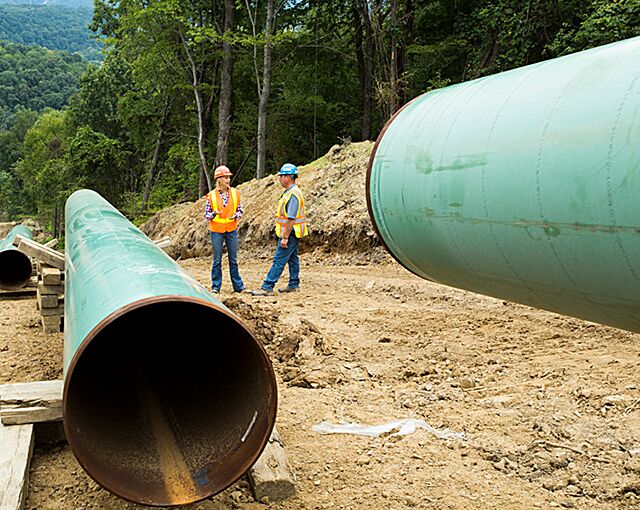
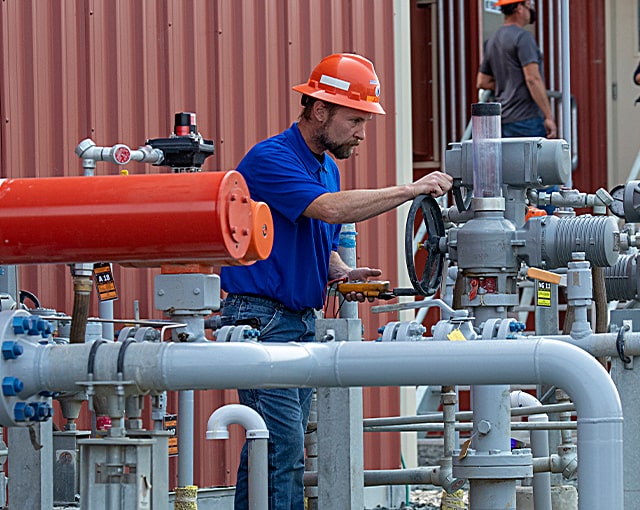
Gathering and Pipeline & Storage
As National Fuel’s midstream businesses work to expand our pipeline network in Appalachia to satisfy the growing demand for local natural gas supplies, we are focused on designing and constructing infrastructure that utilizes best available materials and technologies that minimize emissions, while accommodating the U.S. economy’s conversion to a abundant, affordable and reliable energy source. National Fuel has a dedicated team of engineers who are committed to developing emission-management strategies to ensure continuous compliance with stringent federal and state agency permits and reporting requirements, as well as continuous improvement in engineering designs to meet our long-term emissions objectives. Areas of focus include:
EPA Methane Challenge Program
In 2018, National Fuel Gas Supply Corporation, Empire Pipeline and National Fuel Gas Midstream Company voluntarily entered into EPA’s Methane Challenge Program as a partner in committing to continue to reducing methane emissions. The Methane Challenge Program is voluntary and is focused on the reduction of methane emissions through the use of technology and/or process improvements.
Supply and Empire are participating in the Transmission and Storage segments of the program, while Midstream is participating in the Gathering and Boosting segment of the program. The companies are committed to various voluntary best management practices (BMP), including those for reciprocating compressor rod packing vents, isolation valves, and pneumatic controllers. As Methane Challenge partners, Supply, Empire and Midstream will also provide data beyond what is required by current GHG regulations. The partners were also provided an opportunity to highlight some of their historical methane reduction practices.
In addition, we are committed to continually exploring the applicability of future BMPs or further expansions of the proposed BMPs. In 2020, Supply Corporation and Empire adopted a BMP for fugitive emissions at compressor stations (both transmission and storage industry segments), which focuses on addressing specific leak sources to maximize methane emissions reductions by targeting compressor unit isolation and blowdown valve leakage. Supply Corporation and Empire routinely monitor and evaluate leaking valves for enhanced maintenance and potential replacement. Since fiscal year 2020, Supply Corporation and Empire have replaced 18 blowdown and isolation valves and are on pace to replace a total of 49 valves by the end of fiscal year 2022, driving further expected direct emissions reductions.
To learn more about National Fuel’s Methane Challenge commitments, please visit the partner profiles for the subsidiaries linked below.
Monitoring and Reporting Compliance
Developing and Employing Best Management Practices in New Facility Design and Construction
Across our businesses, we have been focused on developing best management practices and utilizing best available technologies and materials that mitigate and reduce emissions from our new facilities. A particular focus has been on the design, construction and operation of compressor station facilities, where we continue to invest in technologies that meet and often go above what is required by stringent federal and state regulations and ambient air quality standards. These best management practices include, but are not limited to:
- Lean burn combustion with oxidation catalyst emissions control technology employed on engine compressor drivers and emergency electric generators
- Rich burn combustion with non-selective catalytic reduction/three-way catalyst emissions control technology employed on engine compressor drivers and emergency electric generators
- Voluntary installation of combustion devices on dehydration systems to further reduce emissions below compliance limits
- Installation of vent gas recovery systems to capture and consume natural gas during normal operations and facility maintenance
- Standardized usage of low, no-bleed and compressed air–driven pneumatic controllers across the system
- Utilization of solar turbines SoLoNOx and dry gas seal technologies
National Fuel is also a voluntary participant in the Interstate Natural Gas Association of America (INGAA) Environmental Health and Safety Committee.
Please see the following for:
Leak Detection and Repair (LDAR)
As part of our robust leak detection policies, we regularly survey our interstate transmission and gathering pipelines to identify methane leaks which may cause potential safety or operational issues. All identified leaks are repaired or monitored. Additionally, we employ a number of different assessment practices, including hydro-testing, the use of inline inspection tools and cathodic protection surveys to assess pipeline condition, determine the potential for leaks, and prioritize repair or replacement of pipelines.
Further, our midstream businesses employ LDAR techniques, including EPA Reference Method 21 and/or optical gas imaging (OGI) technology at many of the facilities in Pennsylvania. Field personnel conduct regular inspections to address any leaks that impose a safety or operating issue, for overall methane emission reduction, and to meet regulatory requirements. We also use automated gas detection systems in compressor station buildings. These systems identify leaks, which allows us to react in real time and promote a safe work environment.
